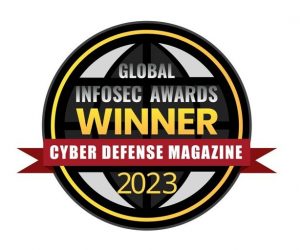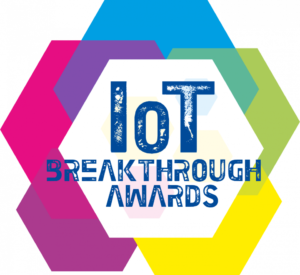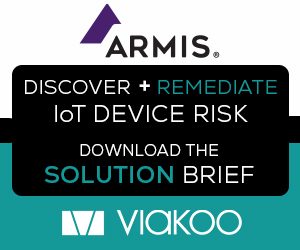We are on the verge of a crisis in Cyber Hygiene. Not only are millions of IoT devices (like physical security cameras) unprotected and vulnerable, the methods to harden and protect them (sustainable cyber hygiene) have often been done manually and require physical presence onsite. Automated solutions like Viakoo can help change this dynamic.
Cyber-hygiene refers to the practices undertaken to maintain the health of networked systems and improve their cybersecurity. In just the same way that routine handwashing, exercise, and vitamins – that is, physical hygiene– helps prevent the spread of disease and helps keep you healthy, routine cyber-hygiene practices help prevent computer ‘virus’ infections, cyber intrusions, and data loss or corruption, and maintain healthy data networks.
The looming crisis that is threatening our networked systems is arising from the impact of several concurrent trends, including the rapid increase of networked equipment, a lack of diligence in implementing cyber-hygiene programs, and market forces that may not reward cyber-hygiene in the short run, among others. Unless organizations take action to avoid the cumulative effect of these negative forces, we will soon see an increase in the number of cyber-intrusions, increased losses of valuable Intellectual Property and private information, and potentially even operational disruptions.
The good news is that this pending crisis can be largely averted by relatively simple direct action, routine reinforcement, and smart deployments of automated systems. But we must all understand that cyber-hygiene, like physical hygiene, is not a one-time event – it is, and will be, an ongoing part of our everyday processes. We must learn to ‘wash our cyber-hands’ correctly, and ensure that these important tasks are refreshed frequently, for the foreseeable future. We must also ensure cyber hygiene can be maintained without sending people onsite, ideally with automation. Once you are sick, or have had a cyber-intrusion, it is too late to take these simple precautions.
Here are just a few of the driving forces and their implications:
Rapid Increase in Networked Devices
Many organizational IT departments do not have an accurate inventory of every hardware device and software with access to the company network. Moreover, we are confident that the percentage that do have an accurate inventory is going down, not up. Many businesses are overwhelmed by this task alone, partly because of the flood of new networkable devices in the growing ‘Internet of Things’ and partly because they have not implemented controls on who has the authority to install programs and ‘apps’ on connected devices.
The security implications of this situation are clear – without a clear accounting of what devices are on the network and what software they are using, it is impossible to ensure that software is up-to-date and the network is secure. The magnitude of the issue is enormous, because every one of those networked devices, from each networked surveillance camera to every employee’s smartphone, is a potential cyber-attack vector.
Take note: a recent Harvard Business Review report concluded that about 60% of successful cyber-attacks on U.S. public companies found their initial point of entry through building systems, including VOIP telephone systems, video surveillance systems, and networked business machines including copiers and printers. When is the last time you checked the firmware version, or password, on one of these devices in your organization? Recent polls have shown that almost all organizations have their camera devices running on old firmware versions.
Importance of Diligence
It is critically important to understand that cyber-hygiene will not be a one-time event. Instead, it will be an ongoing process to confirm, and reconfirm, that the necessary protections are in place and effective.
For example, having an accurate list of network-connected devices and their current software versions is only a snapshot in time. Within a week, a day, or even an hour that list could be outdated, as an employee plugs in a new printer, or a new software update is released that fixes a security vulnerability.
Monitoring connected devices and software is not the only ongoing process that will require diligence. Training staff to recognize phishing and social engineering attacks also requires ongoing effort, not only to bring new hires up to speed on your procedures but also to reinforce and refresh previous training. Developing and implementing a rigorous backup strategy for essential data that includes multiple backup copies at multiple physical locations is another example. And monitoring for, identifying, disabling, and removing applications that are no longer being used is yet another example. In each of these cases, a single strong action such as an audit, a purge, or a training blitz is not sufficient to ensure ongoing cyber-protections. If anything, such an action highlights the scale of the problem that allowed such a backlog in the first place.
Needing to Operate Remotely
Due to COVID-19 there is an imperative for physical security systems to be managed, maintained, and serviced remotely – a requirement likely to remain in place for a long time. Dealers and integrators tasked with updating the firmware for installation and assigning new passwords are now needing both automation (to handle the scale) and a secure digital connection (to perform tasks remotely).
Even after installation, you cannot plan for the availability of onsite IT or other appropriate staff to maintain and update the firmware on surveillance cameras, along with updates for the copy machine, printers, and all the other devices in the system. As a result, organizations need to leverage proven and secure remote monitoring and management solutions like Viakoo.
Going Forward
For organizations, the negative effects of cyber-intrusions or data loss can be severe – in extreme cases, they could even be an existential threat. But as a non-revenue-generating activity, they will rarely be first in line for resources or support.
Fortunately, new technologies for verification of physical security system status and performance can automate a big part of the cyber-hygiene challenge. Automation makes the network element identification task achievable at low cost, providing an up-to-date view of every connected network element, and highlighting any additions or changes. In addition, automated systems are now capable of tracking the current software version of every element, and performing update functions as directed. Together, these tools can make a significant positive impact on any organization’s network security with little need for staff time, which can be redirected at training, system improvements, or other higher-value activities.
The overall objective is to make it as easy and effective as possible for every user to help support network security. And these don’t need to be big, disruptive actions – they can be small, simple actions like washing your hands. Reinforcing good user practices, enabling remote management and service, and automating background systems to identify potential trouble spots, are good steps in the right direction.







